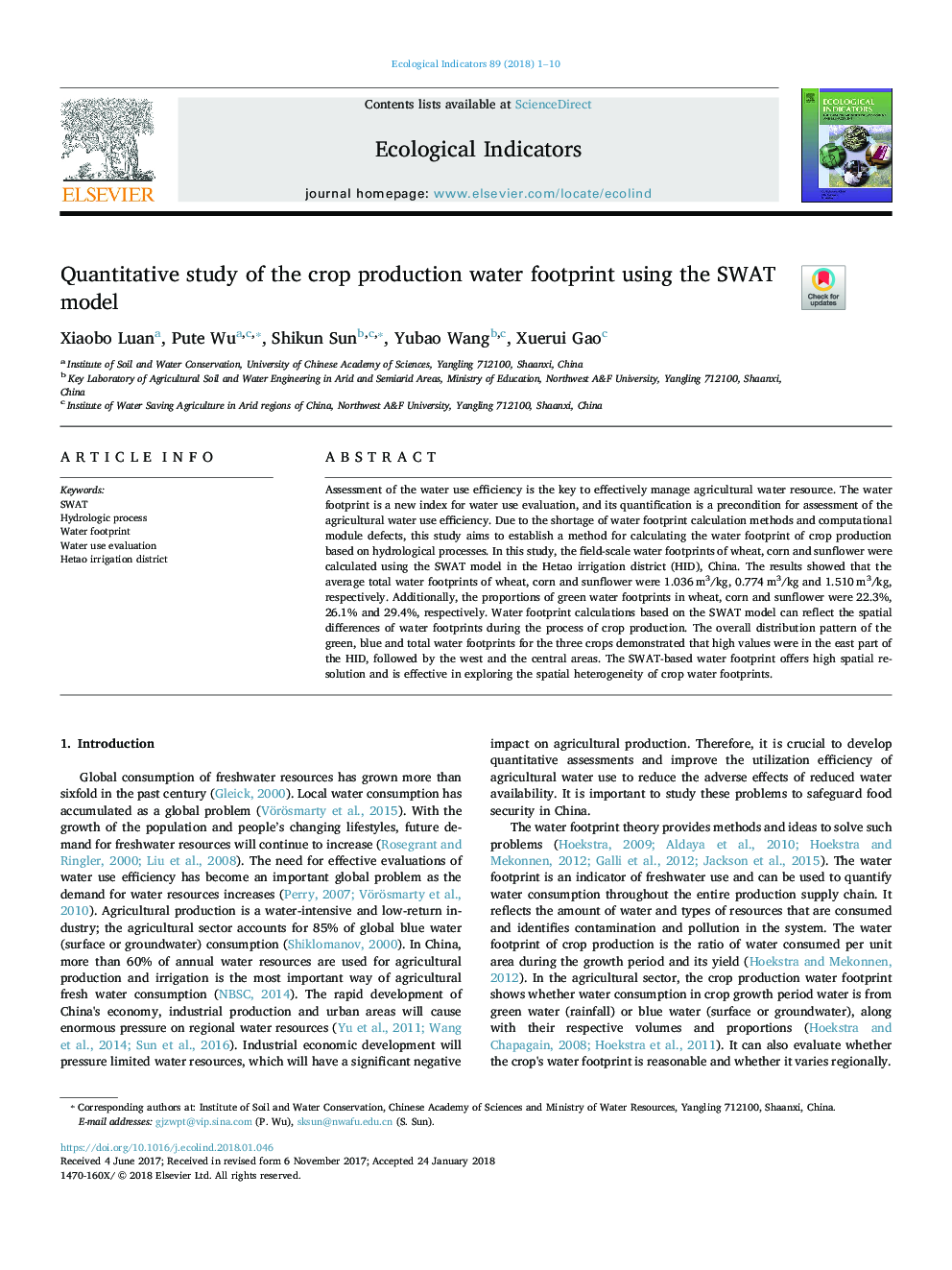| Article ID | Journal | Published Year | Pages | File Type |
|---|---|---|---|---|
| 8845425 | Ecological Indicators | 2018 | 10 Pages |
Abstract
Assessment of the water use efficiency is the key to effectively manage agricultural water resource. The water footprint is a new index for water use evaluation, and its quantification is a precondition for assessment of the agricultural water use efficiency. Due to the shortage of water footprint calculation methods and computational module defects, this study aims to establish a method for calculating the water footprint of crop production based on hydrological processes. In this study, the field-scale water footprints of wheat, corn and sunflower were calculated using the SWAT model in the Hetao irrigation district (HID), China. The results showed that the average total water footprints of wheat, corn and sunflower were 1.036â¯m3/kg, 0.774â¯m3/kg and 1.510â¯m3/kg, respectively. Additionally, the proportions of green water footprints in wheat, corn and sunflower were 22.3%, 26.1% and 29.4%, respectively. Water footprint calculations based on the SWAT model can reflect the spatial differences of water footprints during the process of crop production. The overall distribution pattern of the green, blue and total water footprints for the three crops demonstrated that high values were in the east part of the HID, followed by the west and the central areas. The SWAT-based water footprint offers high spatial resolution and is effective in exploring the spatial heterogeneity of crop water footprints.
Related Topics
Life Sciences
Agricultural and Biological Sciences
Ecology, Evolution, Behavior and Systematics
Authors
Xiaobo Luan, Pute Wu, Shikun Sun, Yubao Wang, Xuerui Gao,
